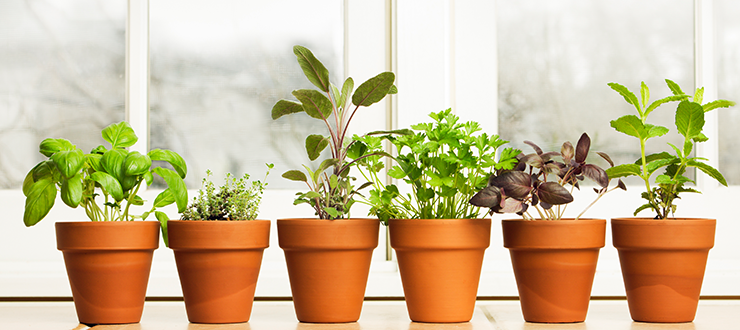
Garden enthusiasts don’t let falling temps and frozen soil stop them from getting their hands in dirt. Instead, most opt to bring their hobby indoors. There are a variety of ways to grow both food and decorative plants while staying cozy inside.
Force Bulbs
Flower bulbs that are typically planted in the fall, like tulip, daffodil, hyacinth, crocus, and iris, can all be forced to grow indoors. These bulbs require a chilling period, usually over winter in the ground, before they’ll bloom in spring. Forcing them to grow indoors means tricking the bulbs into thinking winter is over much sooner than it is. Planting these bulbs now, will give your home a sweet scent and pop of color when winter is in full swing.
To do this, plant the bulbs in containers with a good, well-draining potting mix. Water and place in a cool, but not freezing, dark spot and then bring them into the warmth and light of the house. Garages and unheated basements work good for storage. Keep the bulbs around 40 degrees. It takes about four months to force bulbs, depending on the type. This article provides a list of chill times for specific bulbs.
Warm climate bulbs, like amaryllis and paperwhite, don’t require chilling. They just need to be planted and kept out of direct light in temperatures above 50 degrees, moving them to a warmer spot after about two weeks.
Start an Indoor Herb Garden
Countertop herb gardens are easy to grow and provide fresh flavor to meals during the winter. Kits are readily available online but all you really need is a pot with adequate drainage and a sunny spot on your counter. Many potted herbs are available year-round in grocery stores, or you can grow your own from cuttings. This article from HGTV uses aluminum food cans as containers.
Greens such as lettuce, arugula, mustard, kale and swiss chard can be grown outdoors in cold frames if your climate is more temperate. For best results, check with your extension service for the types of vegetables that can handle your local outdoor winter temperatures.
Expand your Houseplants
Houseplants are a welcome addition to houses that are shut tight to winter’s chill. Houseplants naturally help purify the air, making an indoor environment healthier. Winter is the time to baby your houseplants. Put off repotting for spring. During the winter, your plants also require less water than normal. Check the soil before watering. If it is dry at least an inch down, it is time to water. Rotate your plants to ensure they’re receiving the right amount of light.
Indoor gardens are a welcomed break from the bleakness of winter but they’re not immune to pests. Compare-N-Save Indoor/Outdoor Insecticide can be used on flowers and plantscapes to control mites, flies, spiders and any other pests that might take up residence in your plant’s soil. Compare-N-Save Indoor/Outdoor Insecticide can be applied with a brush application or as a spray. Apply the product where it can’t get on any food and cover all food surfaces. Read the entire label for mixing and application instructions. Do not apply it to any food plants, like your herb garden or lettuces.
Trying these indoor gardening ideas now, means you’ll be enjoying the fruits of your labor deep into winter.
